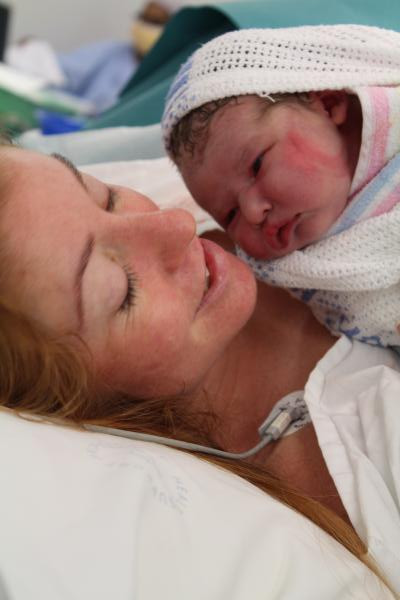By Melissa Grant
Welcoming a child into the world is meant to be one of life’s most joyous events.
However, for many women and families childbirth is an upsetting experience that leaves lasting physical or mental scars – or both.
In fact, one in three Australian women describe their birth experience as traumatic.
It’s also estimated that between 10 and 20 per cent of first-time mothers sustain a long-term physical injury from childbirth.
It’s not uncommon for women to experience incontinence, constant lower back pain, sexual dysfunction, pelvic floor injuries and pelvic organ prolapse.
Some suffer from psychological birth trauma, including anxiety and post traumatic stress disorder.
If the prevalence of birth trauma sounds shocking or surprising that’s because it is somewhat of a taboo topic. There’s a strong narrative that women should be grateful for delivering a healthy baby, which often stops them from sharing their traumatic birth experiences or getting help.
Antenatal classes don’t tend to discuss the possibility of birth trauma – most focus on the pregnancy, labour and breastfeeding.
In a recent episode of Insight on SBS, a mother of three explained how she had never heard of prolapse until she had one.
“This wasn’t to be expected, I didn’t expect it, I didn’t know about it,” she said.
Pelvic organ prolapse is when one or more of the organs in the pelvis – the uterus, bladder or bowel – slip down from their normal position and bulge into the vagina.
It can be severe but not uncommon – more than half of all women who have given birth experience some level of prolapse, according to the Continence Foundation of Australia.
Yet too many women suffer in silence.
However, the Australasian Birth Trauma Association (ABTA) is working hard to change that.
The charity is dedicated to supporting women, partners and families after birth-related trauma.
It provides peer-led support for those affected, while raising awareness about the types of trauma and the help available.
The association was co-founded four years ago by Amy Dawes, an Australian mother who suffered a birth injury from the forceps delivery of her first daughter, Eliya.
Amy sustained a third-degree tear but thought things would get better on their own. She had no idea of the extent of the damage until her daughter was 16 months old. Her pelvic floor muscle had been pulled off the bone and she was diagnosed with pelvic organ prolapse, a condition she’d never heard of.
“I was a qualified personal trainer and I knew nothing of how crucial the pelvic floor is to how the body should work,” she said.
“When I was diagnosed I hadn’t heard of prolapse.”
There were also indications Amy was suffering from acute stress disorder as a result of her diagnosis. She sought support from a psychiatrist and, crucially, was introduced to other women who had suffered similar birth-related injuries but were further along in their healing journey.
“I got to connect with other women going through the same thing,” Amy said.
“When I got through the initial shock of the diagnosis and worked towards getting mentally better, I wanted to help other women.”
One of the main things the ABTA provides is peer support. There are more than 2500 women in the association’s private support group, where birth trauma stories are shared.
“The group supports women who have had babies weeks ago, months ago, years ago and even decades ago,” Amy explained.
“We support women who have had vaginal births, vaginal birth with interventions, emergency C-section, planned C-section, epidural or not… no matter how ‘normal’ it looks from the outside, you can still feel affected by it.
“Incontinence, for example, can impact women regardless of the mode of delivery. Many women think ‘this must be my new normal’ or when they do seek help they are told ‘you’ve just had a baby, what do you expect?’
“Many parents are so busy caring for their kids that they just think they should put up with it or don’t even realise that they can seek support.”
Then there are others, according to Amy, who seek support but have their concerns dismissed.
Amy says while birth-related trauma is often minimised by medical professionals, many women feel like they haven’t been given adequate information to prepare for birth.
The majority of mums who have sought support from the association said their antenatal classes didn’t discuss what happens when birth doesn’t go to plan and possible interventions, such as forceps or cesareans.
“The attitude that we can’t scare women, it’s not working,“ Amy said.
“Statistically, one in five Australian women need an emergency cesarean, and one in three require assisted delivery. They are really big stats – we need to be informing women.”
The ATBA runs an annual awareness week dedicated to shining a light on birth-related trauma.
The theme of this year’s awareness week, from July 19-25, is Better Healing. People are invited to take part in the annual ‘walk n talk’ event to start the conversation and fundraise for the ATBA, which relies solely on the donations of generous supporters.
The social media hashtags are #starttheconversation #saferbirthsbetterhealing #walkntalk.
“There is power in sharing the stories and reducing the stigma,” Amy said.
“The more we raise our voice the harder it is to ignore.”
To donate, or for more information, visit https://www.birthtrauma.org.au/
Do you have birth trauma?
What links you to birth trauma is that, at some point during the process, you felt severely threatened and unsafe or you felt that your baby was unsafe – and you experienced the helplessness and fear that goes along with that.
PSYCHOLOGICAL TRAUMA
The shock of what actually happened during birth can impact mental health and result in conditions such as; anxiety, depression, and other disorders. Some people experience severe emotional distress after a traumatic birth even though there was no physical trauma. It is also important to note that trauma can continue long after the birth, with distinct psychological symptoms.
Psychological trauma can present as:
Postnatal depression and/or anxiety (PNDA)
Post-partum post-traumatic stress disorder (PTSD)
Obsessive Compulsive Disorder (OCD) (For example obsessive thoughts that can affect our behaviour such as checking on baby constantly or recurring thoughts that impact your enjoyment of daily life).
PHYSICAL TRAUMA
Perineal tears: A laceration of the skin, muscles and other soft tissues that separate the vaginal opening and the anus. Tears are usually graded by ‘degrees’ and you may hear the terms first, second, third or fourth degree tear.
Pelvic floor muscle damage: Occurs when the muscles and connective tissue no longer provide the support they once did. Injury to the pelvic floor is very deep and cannot be seen, so is difficult to identify at the time of birth. It is often much later, when women have bladder or bowel problems, or the vaginal bulge feeling of prolapse, that the injury is recognised.
Pelvic organ prolapse: When an organ (or organs) such as the bladder, uterus or bowel loses some of its support and moves downwards through the vagina. symptoms can impact the enjoyment of daily life and adversely impact mental health.
Pelvic fractures (public bone, coccyx, sacrum)
Cesarean wounds: Pain from cesarean wounds usually subside by 3-6 months, but for approximately 11 per cent of women, incision wound pain persists for at least 12 months. Women can also experience pain elsewhere such as back pain and chronic pelvic pain; including pain with sexual function and using tampons 12 months after a C-section.
Source: Australasian Birth Trauma Association









